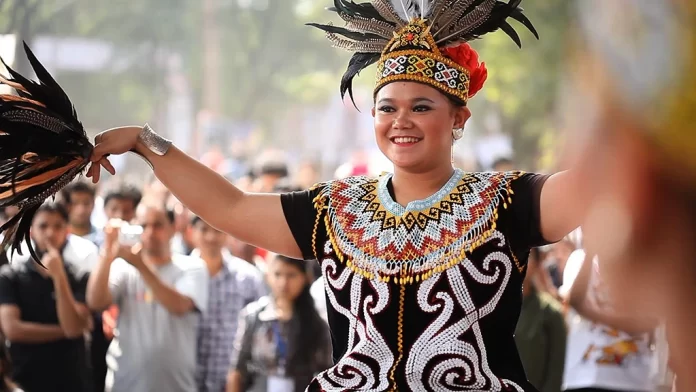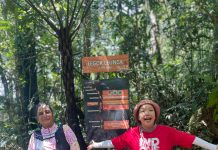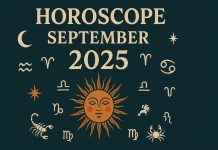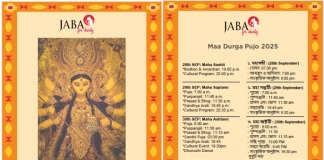The Dayaks are indigenous people who live on the island of Borneo, which is shared by three countries: Indonesia, Malaysia, and Brunei. In Indonesia, the Dayaks are primarily concentrated in the province of Kalimantan (also known as Borneo) and are one of the largest ethnic groups in the region.
The Dayak people of Kalimantan, Indonesia have a rich cultural heritage that is steeped in mysticism and animism. Many of their traditional dances are tied to spiritual beliefs and rituals, which gives them a mystical quality.
In Dayak culture, dance is often used as a form of communication with the spirit world. The movements and rhythms of the dance are believed to have the power to connect the dancers with the spirits of their ancestors and the natural world around them. Through dance, the Dayak people express their gratitude to the spirits for their blessings and seek their protection and guidance.
Furthermore, many Dayak dances are accompanied by traditional music and instruments, which further adds to their mystical quality. The music is often created using bamboo and other natural materials, which are believed to possess spiritual energy.
Here are 12 traditional dances that have deep meaning and value:
Kancet Ledo Dance
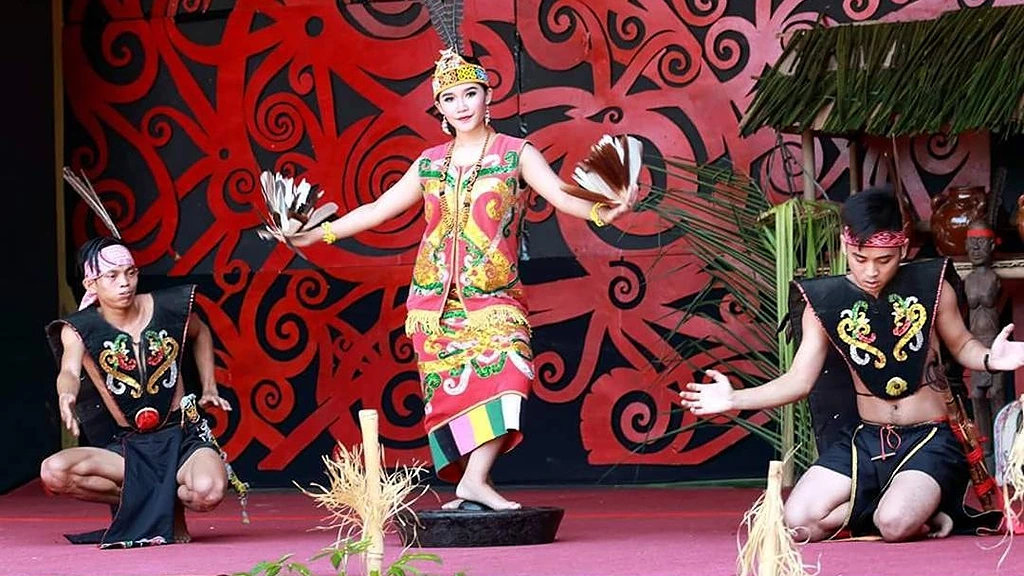 Kancet Ledo Dance can also be called Gong Dance. The Gong dance is danced by a girl on a Gong and the girl will be contested by two Dayak youths. Gong is a famous musical instrument in Indonesia which often accompanies various kinds of song instruments. In addition to the Gong, this dance is also accompanied by a traditional Dayak musical instrument called Sampe. This dance is usually performed during the ceremony of welcoming guests or the ceremony of welcoming the birth of a baby chief. The dance requires a lot of skill and grace to perform, with a focus on delicate hand movements, body movements and footwork.
Kancet Ledo Dance can also be called Gong Dance. The Gong dance is danced by a girl on a Gong and the girl will be contested by two Dayak youths. Gong is a famous musical instrument in Indonesia which often accompanies various kinds of song instruments. In addition to the Gong, this dance is also accompanied by a traditional Dayak musical instrument called Sampe. This dance is usually performed during the ceremony of welcoming guests or the ceremony of welcoming the birth of a baby chief. The dance requires a lot of skill and grace to perform, with a focus on delicate hand movements, body movements and footwork.
Kancet Papatai Dance
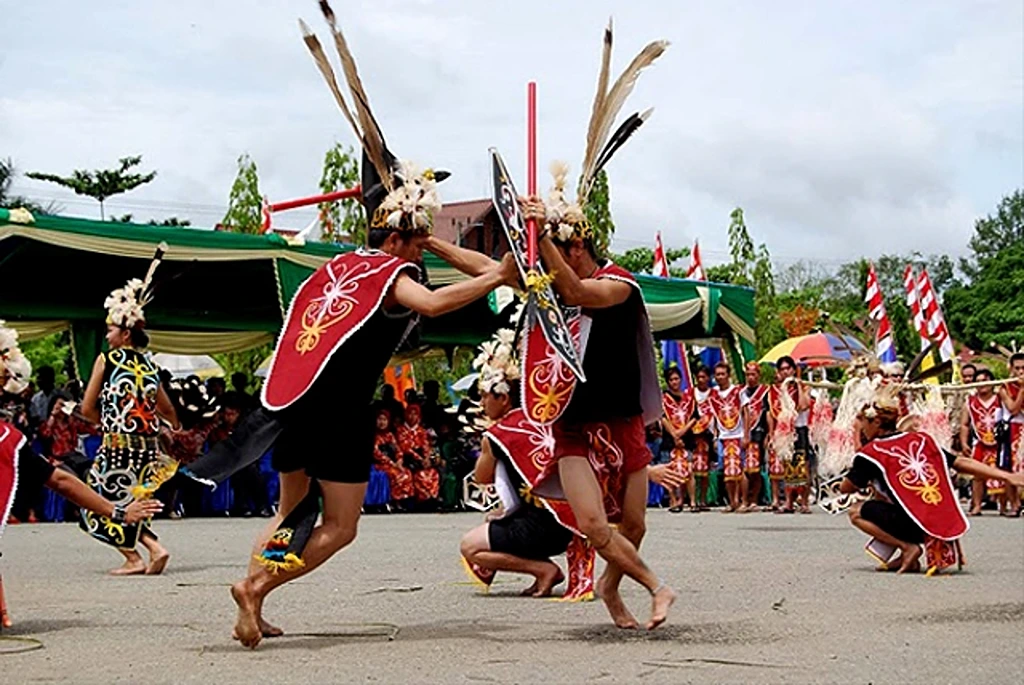 This dance is a war dance that tells about the heroes of the Dayak Kenyah tribe when they face enemies. Papatai Kancet dance is still often performed in various performances, such as traditional ceremonies and cultural events for the government of East Kalimantan Province. The dancers of the papatai kancet dance use unique costumes and accessories named Kelembit (shield), Mandau (main weapon), Beluko (hat), Lawung (headband), Besunung (vest), and necklaces made of tiger teeth. This dance is performed in an agile and energetic manner.
This dance is a war dance that tells about the heroes of the Dayak Kenyah tribe when they face enemies. Papatai Kancet dance is still often performed in various performances, such as traditional ceremonies and cultural events for the government of East Kalimantan Province. The dancers of the papatai kancet dance use unique costumes and accessories named Kelembit (shield), Mandau (main weapon), Beluko (hat), Lawung (headband), Besunung (vest), and necklaces made of tiger teeth. This dance is performed in an agile and energetic manner.
Gantar Dance
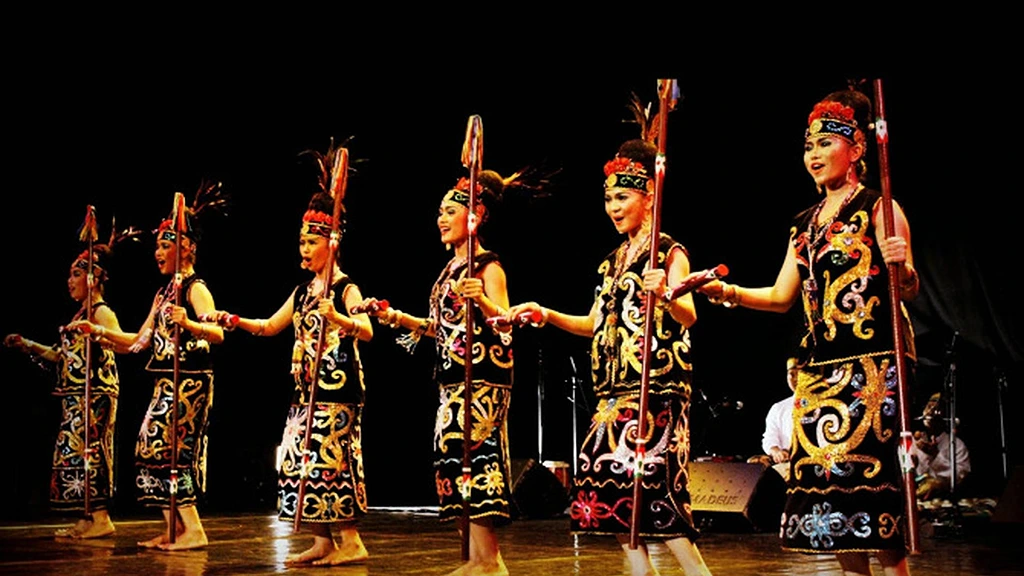 The Gantar dance originates from the Benuaq and Tunjung Dayak tribes in West Kutai Regency, East Kalimantan. The Gantar Dance movement reflects the movement of pounding rice to ask for blessings from Dewi Sri or Dewi Padi. The clothing used for the Gantar Dance is doyo ulap, a woven cloth made from doyo leaf fiber, a type of pandanus plant with strong fibers. Meanwhile, the Gantar Dance property consists of Senak (long stick), Kusak (Bamboo filled with seeds), Pesapu (head tie made of cloth or batik which is widely worn by male dancers of the Benuaq and Tunjung Dayak tribes in East Kalimantan).
The Gantar dance originates from the Benuaq and Tunjung Dayak tribes in West Kutai Regency, East Kalimantan. The Gantar Dance movement reflects the movement of pounding rice to ask for blessings from Dewi Sri or Dewi Padi. The clothing used for the Gantar Dance is doyo ulap, a woven cloth made from doyo leaf fiber, a type of pandanus plant with strong fibers. Meanwhile, the Gantar Dance property consists of Senak (long stick), Kusak (Bamboo filled with seeds), Pesapu (head tie made of cloth or batik which is widely worn by male dancers of the Benuaq and Tunjung Dayak tribes in East Kalimantan).
Mandau Dance
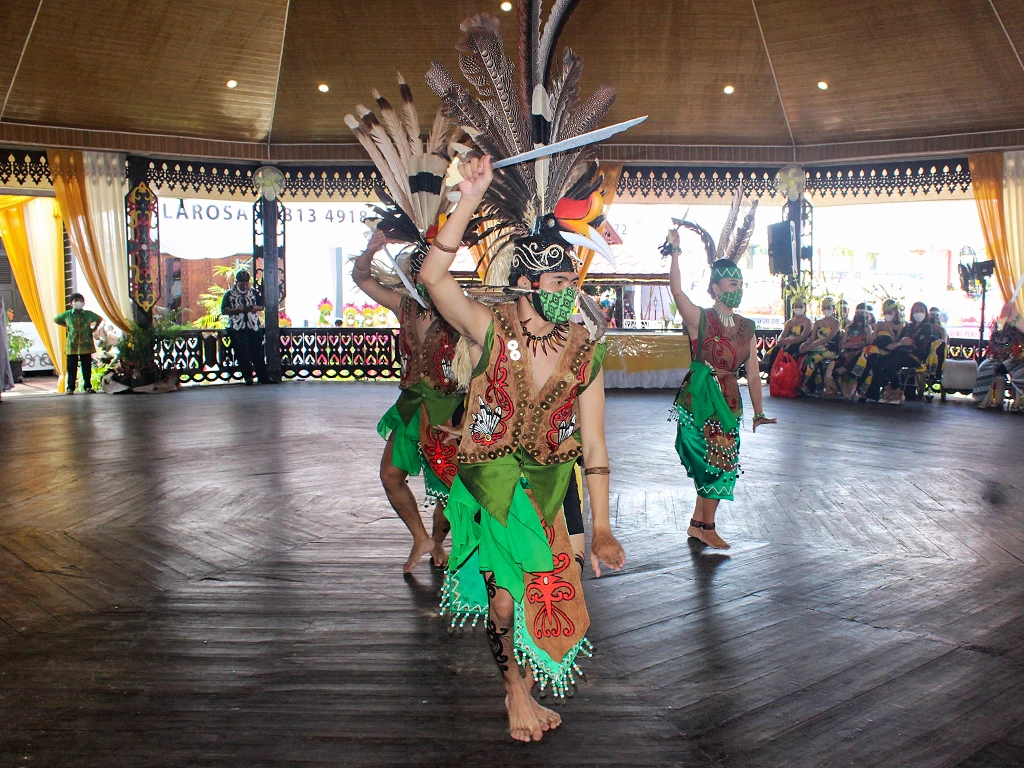 This is a dance performed by the Dayak Kenyah people to celebrate the courage and strength of a warrior. The dance involves the use of a traditional sword called mandau.
This is a dance performed by the Dayak Kenyah people to celebrate the courage and strength of a warrior. The dance involves the use of a traditional sword called mandau.
The Mandau Dance often shows very dangerous scenes, such as swinging and biting a very sharp Mandau weapon. Before the dance, dancers do a special ritual for safety. The movements of the dancers are accompanied by musical instruments such as drums and gerantung. The costumes and accessories used are Motive Vest Shirts, Loincloths, Head Covers in the form of Tingang Birds, Saber Weapons, and Talawang (Shield).
Datun Julud Dance
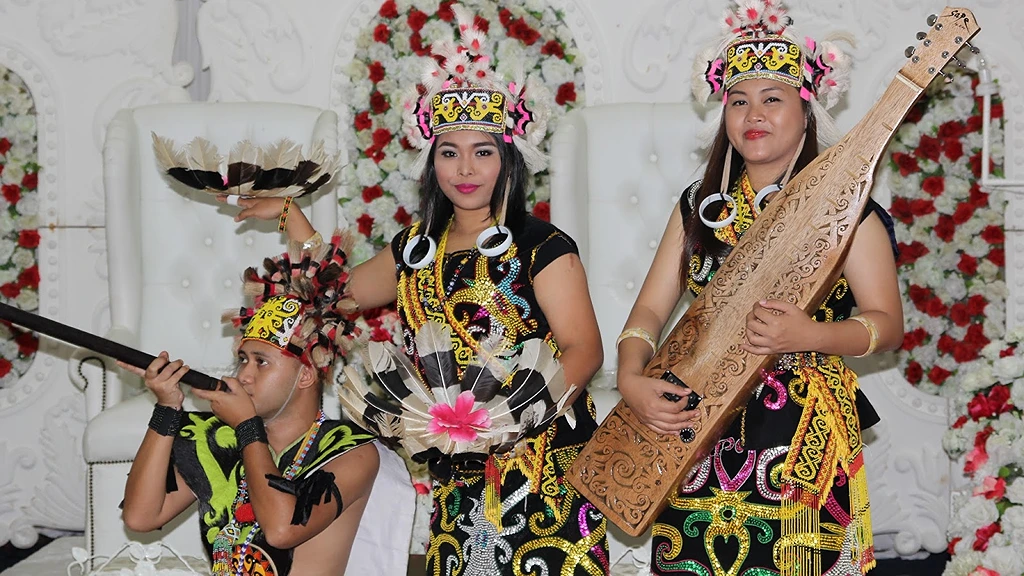
This dance is a traditional dance of the Dayak Kenyah community from the interior of East Kalimantan, Indonesia. According to them, the dance is performed after the harvest season as a gesture of gratitude. In addition, Datun Julud Dance is also performed during wedding ceremonies and village cleansing rituals. The dance is performed by young women of the Dayak Kenyah tribe who move backward (julut) in a circular formation, accompanied by soft hand movements and adorned with enggang bird feathers (mano’uwek). The dance is accompanied by a stringed musical instrument called a sampe.
Datun Ngentau Dance
This is one of the dances that is still alive in Ritan Baru Village, Tabang District, Kutai Kartanegara Regency. There can be up to 20 dancers, in a graceful dance combined with dynamic movements in a fast tempo. The dancers wear black doyo embroidered costumes, coupled with very distinctive hornbill feathers. The function of the Datun Ngentau dance is as a medium of expression of gratitude for the rice harvest.
Giring-Giring Dance
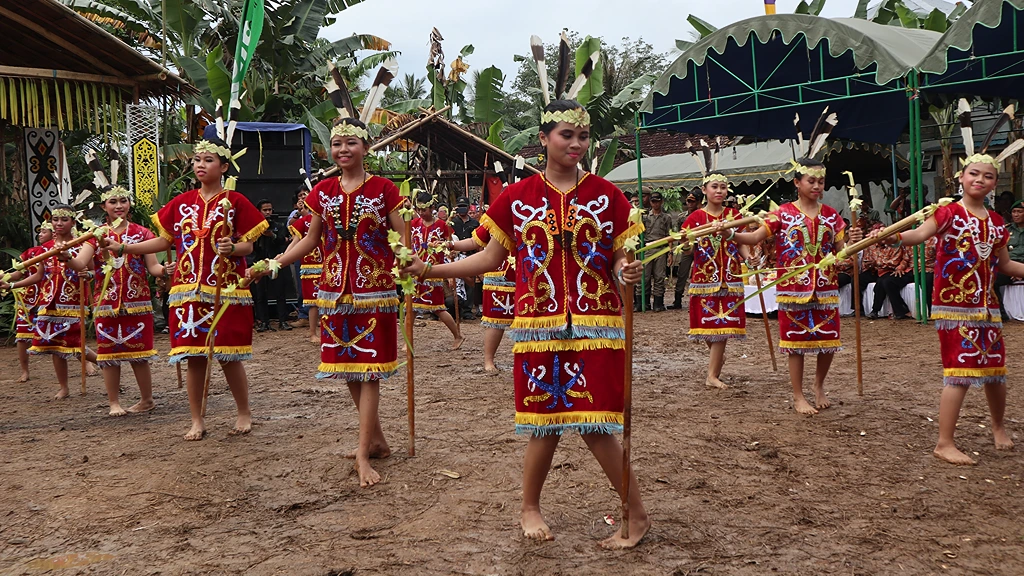 Giring-Giring Dance is a traditional Central Kalimantan Dayak dance that uses two kinds of sticks, a long sticks and short stick. In South Kalimantan, this dance is called the Gintur Dance. This dance expresses the joy and pleasure of the people. The long stick is held in the left hand and is used to stomp the floor. Meanwhile, the short stick is held in the right hand and played by swinging it, resulting in a unique sound when combined with the sound of a long stick beating.
Giring-Giring Dance is a traditional Central Kalimantan Dayak dance that uses two kinds of sticks, a long sticks and short stick. In South Kalimantan, this dance is called the Gintur Dance. This dance expresses the joy and pleasure of the people. The long stick is held in the left hand and is used to stomp the floor. Meanwhile, the short stick is held in the right hand and played by swinging it, resulting in a unique sound when combined with the sound of a long stick beating.
Hudoq Dance
![]() Hudoq is a cultural icon of the Dayak tribe from East Kalimantan Province. Apart from being full of mystical meaning, this dance also serves as entertainment for the Dayak people when clearing land. The main attraction of this dance lies in the use of masks with carvings and colorful patterns of the Dayak tribe. The masks are made by shamans in the form of spirits in water with the most terrifying appearance they have ever seen. This dance has 6 to 8 people using costumes made of banana leaves, coconut leaves, or areca leaves. They also wear crowns of hornbill feathers and masks. Meanwhile, the leader of the dance will bring a stick that will be stamped according to the accompaniment.
Hudoq is a cultural icon of the Dayak tribe from East Kalimantan Province. Apart from being full of mystical meaning, this dance also serves as entertainment for the Dayak people when clearing land. The main attraction of this dance lies in the use of masks with carvings and colorful patterns of the Dayak tribe. The masks are made by shamans in the form of spirits in water with the most terrifying appearance they have ever seen. This dance has 6 to 8 people using costumes made of banana leaves, coconut leaves, or areca leaves. They also wear crowns of hornbill feathers and masks. Meanwhile, the leader of the dance will bring a stick that will be stamped according to the accompaniment.
Hudoq Kita’ Dance
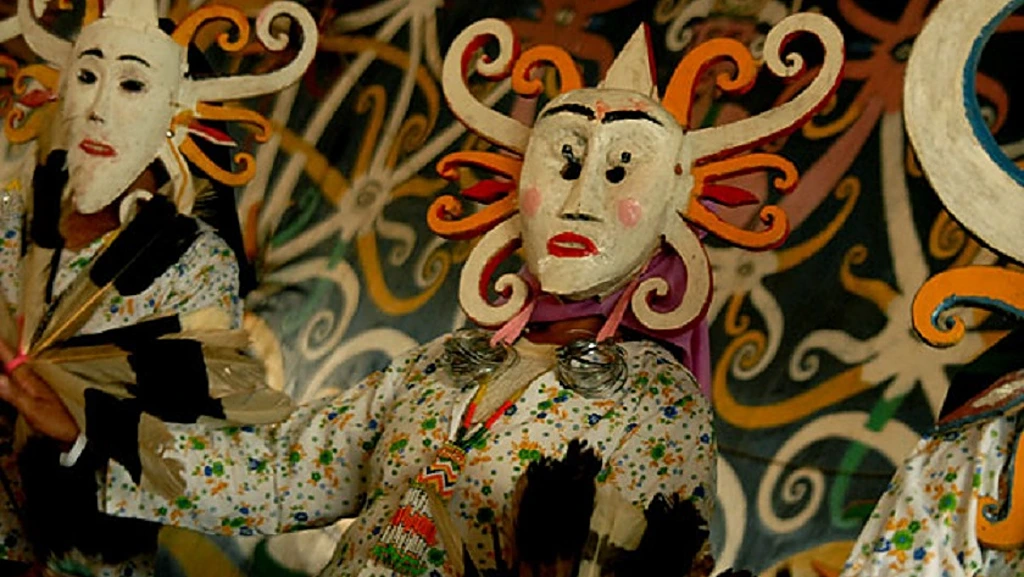 This dance is associated with ritual ceremonies as an expression of gratitude and joy for the Dayak Kenyah community for the rice harvest.
This dance is associated with ritual ceremonies as an expression of gratitude and joy for the Dayak Kenyah community for the rice harvest.
It is danced by women, using a beautiful mask (hudoq) made of woven beads in the shape of a veil depicting humans. Hudoq Kita’ is the most important and inseparable part of the religious spiritual life of the Dayak Kenyah community. The Hudoq clothing’ consists of a long-sleeved shirt, sarong, and a wooden mask that symbolizes humans.
Kinyah Mandau Dance
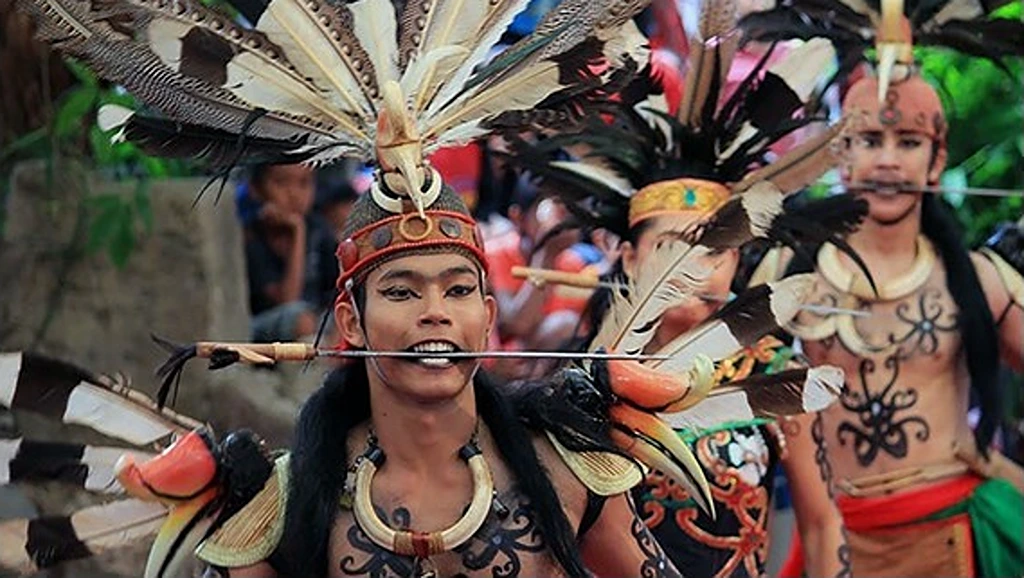
In Central Kalimantan, the Kinyah dance is known as the Kinyah Mandau Dance. This dance originates from an ancient Dayak tribe tradition called kinyah, which means war dance in preparation for killing and targeting the enemy’s head. However, this headhunting tradition ended after the Tumbang Anoi peace agreement which occurred around 1894. Over time, kinyah is still a tradition of the Dayak tribe in Kalimantan and has developed into a traditional dance of the Dayak tribe. Although not for war, kinyah is used as a means of art and culture for the Dayak people to preserve their traditions.
Punan Letto dance
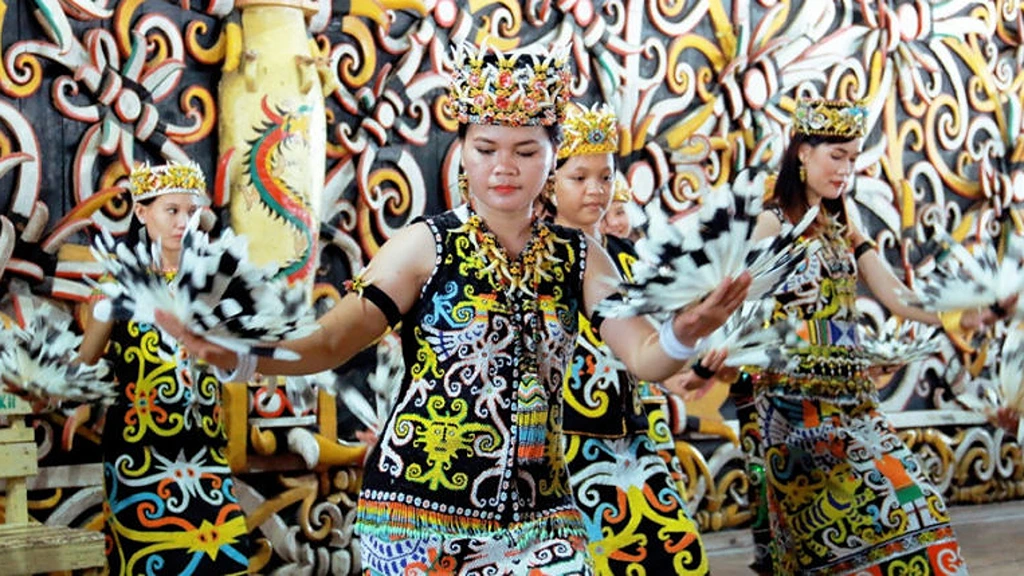 Punan Letto dance is a traditional dance of the Dayak Kenyah tribe in East Kalimantan. The name of this dance comes from the word ‘punan’ which means seize, and ‘letto’ which means girl. This dance tells the story of a young man who fights over a girl and defends her bravely. The Punan Letto dance shows the attitude of the Dayak Kenyah tribe who tenaciously defend their property in any form. In general, the dance movements used by the Dayak Kenyah imitate the movements of war and hornbills. This is reflected in the costumes which use a lot of feathers and bird heads.
Punan Letto dance is a traditional dance of the Dayak Kenyah tribe in East Kalimantan. The name of this dance comes from the word ‘punan’ which means seize, and ‘letto’ which means girl. This dance tells the story of a young man who fights over a girl and defends her bravely. The Punan Letto dance shows the attitude of the Dayak Kenyah tribe who tenaciously defend their property in any form. In general, the dance movements used by the Dayak Kenyah imitate the movements of war and hornbills. This is reflected in the costumes which use a lot of feathers and bird heads.
Ngerangkau dance
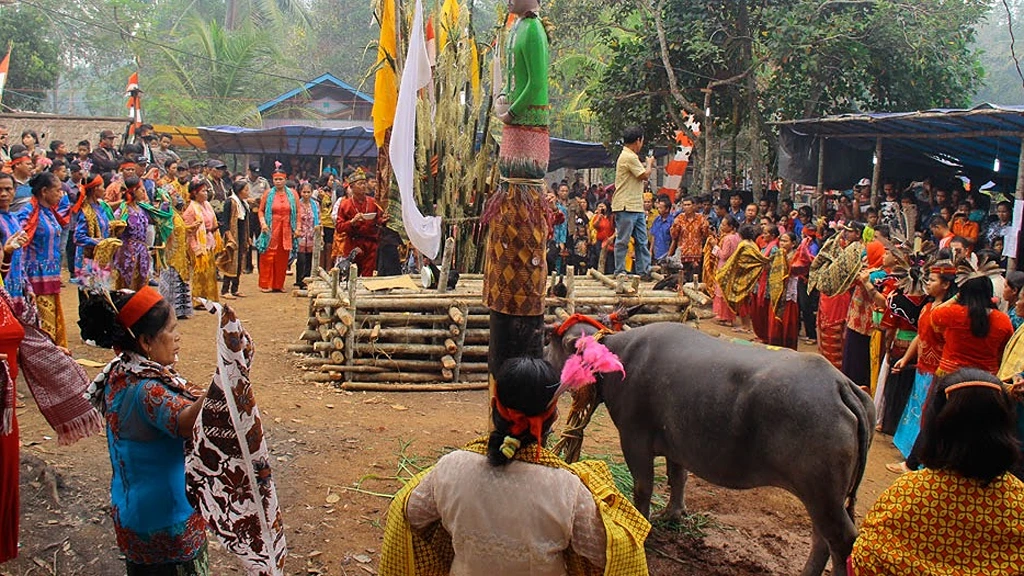 The Ngerangkau dance is a traditional dance for the dead of the Dayak Tunjung and Benuaq tribes. This dance uses rice pounding tools which are banged regularly in a horizontal position to create a certain rhythm. The Ngerangkau dance performance is a group dance consisting of a group of male dancers and a group of female dancers, they are relatives of the organizers of the ceremony as well as the family of their ancestors. The dance is performed by surrounding the coffin and they form a long line, marching backwards. The musical instruments that accompany the dance consist of bodies, gongs, large drums and lots of sound.
The Ngerangkau dance is a traditional dance for the dead of the Dayak Tunjung and Benuaq tribes. This dance uses rice pounding tools which are banged regularly in a horizontal position to create a certain rhythm. The Ngerangkau dance performance is a group dance consisting of a group of male dancers and a group of female dancers, they are relatives of the organizers of the ceremony as well as the family of their ancestors. The dance is performed by surrounding the coffin and they form a long line, marching backwards. The musical instruments that accompany the dance consist of bodies, gongs, large drums and lots of sound.
Overall, the Dayak dances are deeply rooted in the spiritual beliefs and practices of the culture, which gives them a mystical quality and makes them an important part of Dayak identity and heritage.


